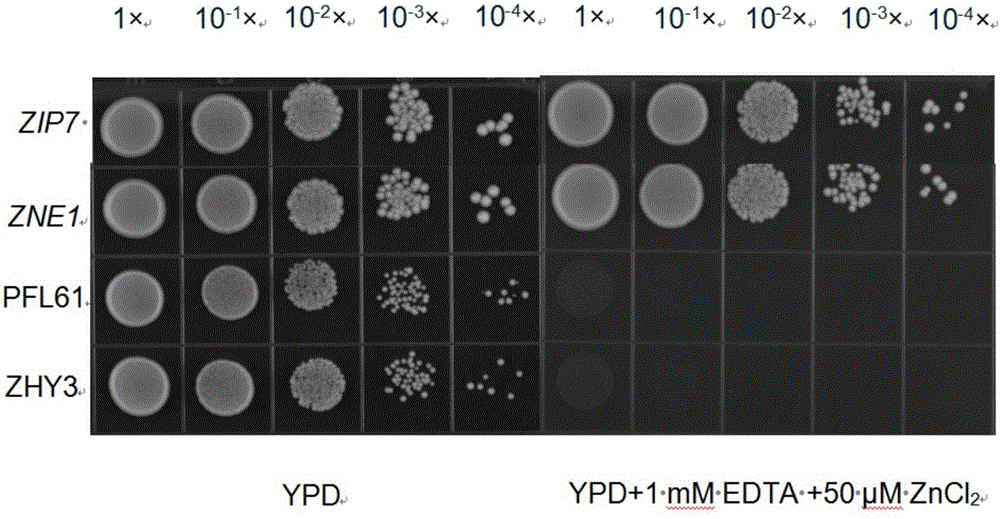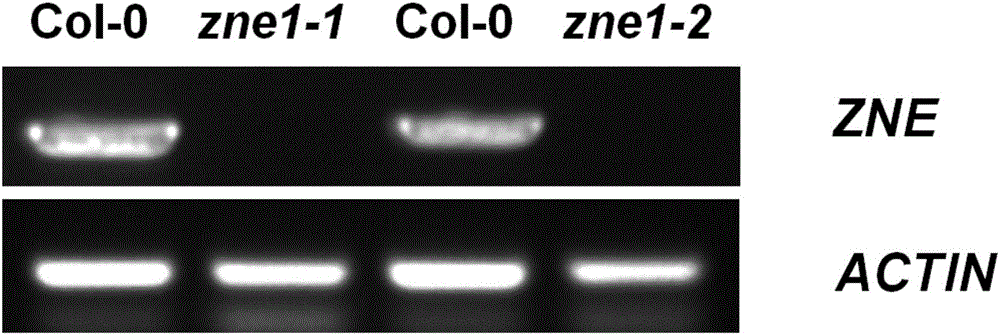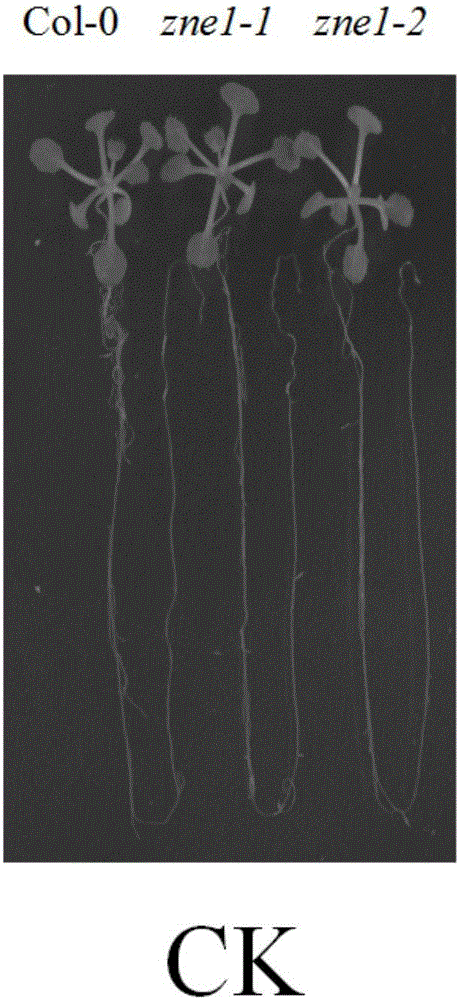Gene for promoting plants to absorb zinc ions, amino acid sequence, expression vector and application
A technology for plant absorption and expression vectors, applied in the field of plant biology, can solve the problems of undiscovered genes and insufficient research, and achieve the effect of increasing the content
- Summary
- Abstract
- Description
- Claims
- Application Information
AI Technical Summary
Problems solved by technology
Method used
Image
Examples
Embodiment 1
[0040] A gene that promotes zinc ion absorption by plants, the sequence of the gene is shown in SEQ ID NO:1. Correspondingly, an amino acid sequence encoded by the gene is shown in SEQ ID NO:8.
[0041] A first primer set for identifying the gene mutation, a second primer set and a third primer set, the first primer set includes an upstream primer F1 and a downstream primer R1, the sequence of the upstream primer F1 is shown in SEQ ID NO: 2 The sequence of the downstream primer R1 is shown in SEQ ID NO: 3; the second primer set includes upstream primer F2 and downstream primer R2, the sequence of the upstream primer F2 is shown in SEQ ID NO: 4, the downstream The sequence of primer R2 is shown in SEQ ID NO: 5; the third primer set includes upstream primer Actin F and downstream primer Actin R, the sequence of the upstream primer Actin F is shown in SEQ ID NO: 6, and the downstream primer Actin The sequence of R is shown in SEQ ID NO:7.
Embodiment 2
[0043] This example is the functional identification of the ZNE gene.
[0044] The frozen zinc ion-deficient yeast was streaked onto YPDA solid medium and cultured upside down at 30°C until monoclonal colonies grew. Then the monoclonal colony was transferred to 3ml YPDA medium and cultured at 250rpm at 30°C for 8-12h. Take 5ul of the culture solution and expand it into 50ml of YPDA medium at 30°C and 250rpm to continue culturing until the OD600 reaches 0.15-0.3. Centrifuge at 700g for 5min at room temperature, discard the supernatant, and resuspend the cells with 100ml of fresh YPDA. Continue culturing at 30°C and 250 rpm until the OD600 reaches 0.4-0.5. Divide the medium into two 50ml sterile tubes, centrifuge at 700g for 5min at room temperature, discard the supernatant, and add 30ml ultrapure water to each tube to resuspend the bacteria. Centrifuge at 700g for 5min at room temperature, discard the supernatant, and add 1.5ml 1.1X TE / LiAc to each tube to resuspend the bacte...
Embodiment 3
[0048] This example is a verification test of the function of the ZNE gene in Arabidopsis plants.
[0049] The experimental materials in this example are mainly the Arabidopsis wild-type material Col-0 containing the ZNE gene, and the deletion homozygous mutants zne1-1 and zne1-2 of the ZNE gene obtained by inserting T-DNA, wherein, zne1-1 is a deletion homozygous mutant obtained by inserting chr 3 2625013bp coding region sequence of Arabidopsis wild-type gene into T-DNA; zne1-2 is obtained by inserting chr 3 2626125bp coding region sequence of Arabidopsis wild-type gene into T-DNA Deletion homozygous mutants. Both zne1-1 and zne1-2 belong to the ZNE gene deficiency type because of the insertion of T-DNA in the gene, which leads to the destruction of the function of the gene.
[0050] 1. Verify the genotypes of Col-0, zne1-1 and zne1-2.
[0051] Col-0, zne1-1 and zne1-2 were respectively subjected to PCR amplification using the primer set in Example 1 to verify their genotyp...
PUM
 Login to View More
Login to View More Abstract
Description
Claims
Application Information
 Login to View More
Login to View More - R&D
- Intellectual Property
- Life Sciences
- Materials
- Tech Scout
- Unparalleled Data Quality
- Higher Quality Content
- 60% Fewer Hallucinations
Browse by: Latest US Patents, China's latest patents, Technical Efficacy Thesaurus, Application Domain, Technology Topic, Popular Technical Reports.
© 2025 PatSnap. All rights reserved.Legal|Privacy policy|Modern Slavery Act Transparency Statement|Sitemap|About US| Contact US: help@patsnap.com



